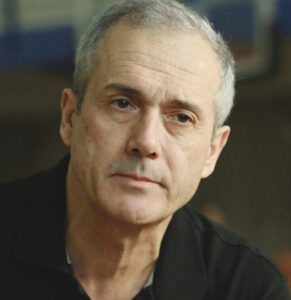- March 17, 2022
- Posted by: Stef Lantin
- Category:
Lecturer 2023:
Professor Adrian Bejan
J.A. Jones Distinguished Professor of Mechanical Engineering
Duke University, NC, USA

Bio
Adrian Bejan was awarded the 2018 Benjamin Franklin Medal for “his pioneering interdisciplinary contributions in thermodynamics…and constructal theory, which predicts natural design and its evolution in engineering, scientific, and social systems.”
He earned all his degrees from the Massachusetts Institute of Technology: B.S. (1971, Honors Course), M.S. (1972, Honors Course) and Ph.D. (1975). He was Fellow of the Miller Institute for Basic Research in Science, University of California Berkeley (1976-1978). Since 1989 he is the J.A. Jones Distinguished Professor at Duke University.
Prof. Bejan’s research is in applied physics, thermodynamics, theoretical biology, and design and evolution everywhere in nature, bio, and non-bio. He created original methods of theory, modeling, analysis, and design, which today are associated with his name: entropy generation minimization, scale analysis, intersection of asymptotes, heatlines, constructal law, and evolutionary design everywhere in nature, bio and non-bio.
He is the author of 30 books and 700 peer-refereed journal articles. Google Scholar: h = 105, total citations 82,000. He is the author of 30 books and 700 peer-refereed journal articles. Google Scholar: h = 105, total citations 82,000. According to the 2019 ‘citations impact’ world rankings, he is 9th among all Engineering authors in the world, all disciplines.
He was awarded 18 honorary doctorates from universities in 11 countries, for example, Swiss Federal Institute of Technology (ETH Zurich), University of Rome I “La Sapienza”, National Institute of Applied Sciences (INSA) Lyon, and University of Pretoria. He is a member of the Academies of Europe, Mexico, Turkey, Romania, and Moldova.
Adrian Bejan’s books are used worldwide (in multiple editions), for example:
- Advanced Engineering Thermodynamics, 4th Ed, Wiley 2016.
- Convection Heat Transfer, 4th Ed, Wiley 2013.
- Convection in Porous Media, 5th Ed, Springer 2017.
- Shape and Structure, from Engineering to Nature, Cambridge U. P. 2000.
- Design in Nature, Doubleday 2012, two translations.
- The Physics of Life, St. Martin’s Press, 2016, six translations.
- Freedom and Evolution, Springer Nature, 2020, two translations.
- Time and Beauty, World Scientific, 2022.
Title of the lecture:
Vascular materials: Predicting Design Evolution
His lecture, entitled: Vascular materials: Predicting Design Evolution, will focus on one of his major contributions: evolutionary design illustrated in the case of multiscale vasculature, a methodology that can be used generally to predict the evolution toward flow access, miniaturization, high density of heat transfer, and the scaling up (or down) of an existing design.
Abstract
Porous materials are usually thought of as amorphous mixtures of two or more things, solids, fluids, and voids. The research field started that way, and so did my own activity in it. Along the way, I was drawn to the part of nature (the physics) that was missing from the amorphous view: the structure, flow, configuration, drawing (design), purpose, and evolution.
The lecture is pictorial. It begins with defining the terms, because words have meaning: vascular, design, evolution, and prediction (theory). Next, the lecture shows that vascular (tree shaped) architectures flow more easily than parallel channels with only one length scale (the wall to wall spacing). Transport across channels is facilitated when the spacing is such that the channel flow length matches the entrance (developing) length of the flow.
The tendency to evolve with freedom toward flow configurations that provide greater access is universal in nature, bio, and non-bio. This tendency is the Constructal Law, which empowers us to predict the evolution toward flow access, miniaturization, high density of heat transfer, and the scaling up (or down) of an existing design.
Multiscale vasculatures occur naturally because they flow more easily than their counterparts with a few length scales. The future of evolutionary design everywhere points toward vascular, hierarchical flow architectures that will continue to morph with freedom and directionality.
To read more:
HEAT TRANSFER: Evolution, Design, and Performance, Wiley 2022.
FREEDOM AND EVOLUTION: Hierarchy in Nature, Society and Science, 2020.
CONVECTION HEAT TRANSFER, 4th ed, Wiley, 2013.
How to request and host the InterPore Kimberly-Clark Distinguished Lectures
InterPore Foundation accepts applications from member and non-member organizations for hosting the InterPore Kimberly-Clark Distinguished Lecturer. To request the presentation, please download and fill out the application form and return it to Sandra Bartsch with nomination@interpore.org in CC. Lecturer availability will be limited and not all requests can be honored by the lecturer.
Should a physical presentation not be feasible because of travel restrictions due to the COVID-19 pandemic, lecturers will be available to give an online presentation.

